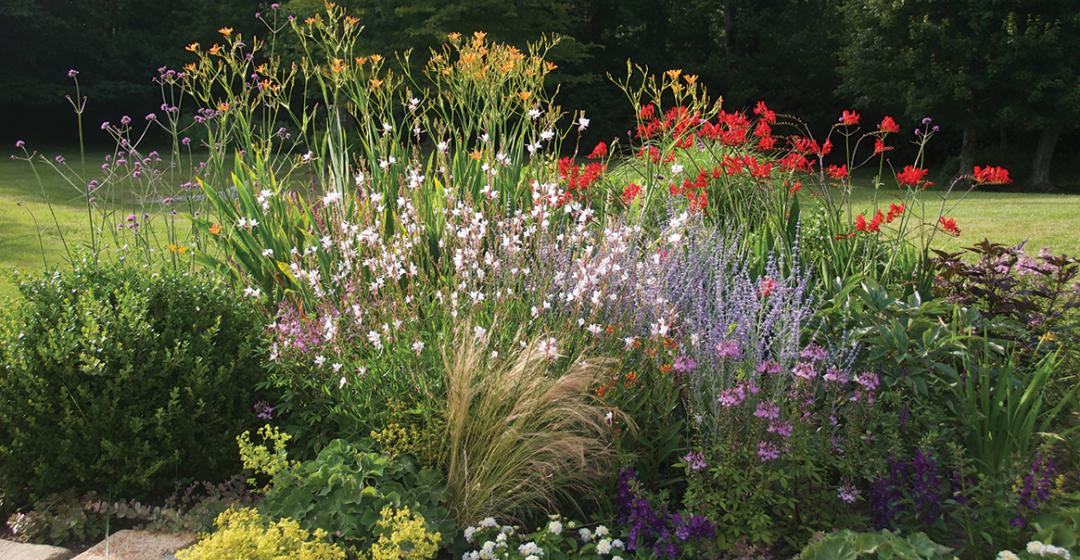When planning her garden, Sally Graham had three essential criteria. She wanted it to be deer resistant, attract butterflies, and bloom throughout the summer, long after most gardens had reached their peak.
On a visit to her serene Chilmark home in August, it’s clear that she accomplished her goals. As you ascend the gravel driveway flanked by stone walls, a verdant canopy of trees gives way to a medley of color that has been known to entice monarch butterflies by the dozens. Hues of violet, orange, white, yellow, and red complement the pale gold of Graham’s cedar shake house.
“A lot of gardens are just ending now because they grow the beautiful – what I call ‘romantic’ – flowers. They’re so gorgeous but they don’t last,” said Graham as she led the way down the pathway to her backyard. “In August, when everything’s sort of dying, this is still here.”
She was referring to robust clusters of salvia and verbena, among many other plants that have extended life spans in her gardens. While the flower beds are supplemented with annuals, she estimated that 80 percent of the plants are perennials.
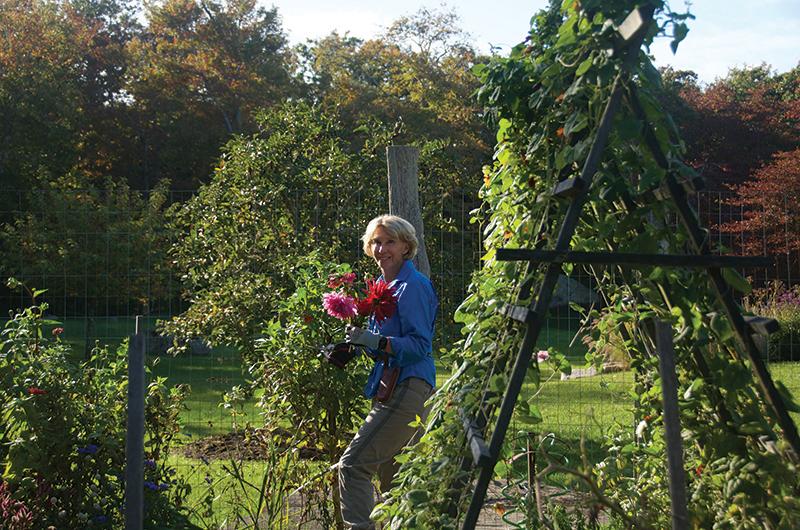
“You find something you really like and don’t want to live without it,” said Graham. “The lady’s mantle in my garden always adds such a nice green color.”
Graham purchased the charming, elevated-farmhouse-style property off Middle Road in 2017, but first moved to the Island in 1979 for what she calls a “typical Island stay.”
“It’s when we said, ‘let’s go for a year,’ and never really left,” she recalled with a chuckle.
Her career since then has included roles as a cartographer, cardiopulmonary perfusionist, and co-owner of a technology company with her then-husband. While running the tech company, Graham used to commute between the Vineyard and Lakeville, Massachusetts. On the Island she has also served as an administrator for Vineyard Conservation Society, served on the Chilmark Board of Health, and volunteered for the Friends of Family Planning, among several other boards. She also enjoyed stints living in New York, Utah, and, most recently, California, until her Chilmark purchase. She now spends her summers on the Island and lives in Florida from January through March.
“I loved it the minute I saw it,” she said of the house that lured her away from California. She gives particular credit to the previous owners, who, Graham said, “had a really good eye.” The house was previously attached to a barn and a guest house, and it had three driveways that have since been consolidated into one.
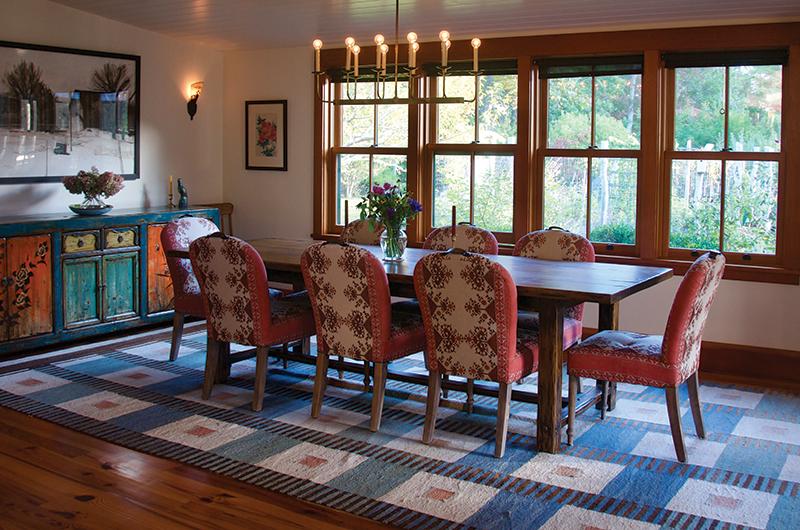
“I haven’t really done anything to the building. The people who had it before me were the ones who did the really big renovation. I keep just adding to it,” she explained.
With the heavy lifting out of the way, Graham was free to focus on adding her own stylish touches to the property, which today is filled with warm, rich tones and colorful accents in the form of thoughtfully chosen furniture, upholstery, and works of art. Downstairs, the open floor plan flows seamlessly from the mudroom to the kitchen to a relaxed, inviting dining room and living room. Nearly every space is accented by flowers harvested from her garden.
Situated off the dining room is arguably Graham’s biggest improvement to the property: a generously sized screened-in porch that overlooks the various gardens and a sprawling lawn. Graham consulted with Lila DiBiaso and her team at Botanica Garden Design and Landscaping Company for their expertise, and had the sloped land at the back of the house flattened to create an elegant outdoor patio space bordered by a stone wall and more gardens.
“As you live in a place, things reveal themselves,” Graham said. “Everything was always kind of leaning. So I thought it would be nice to have a flat area to sit, and then put the gardens around it. We just went from there and carried it around [the side of the house].”
Beyond the lawn rises a dense perimeter of foliage that serves as a border between the property and the next road. The forest adds a layer of seclusion to the space, not unlike the scenery of the nearby Fulling Mill Brook Preserve.
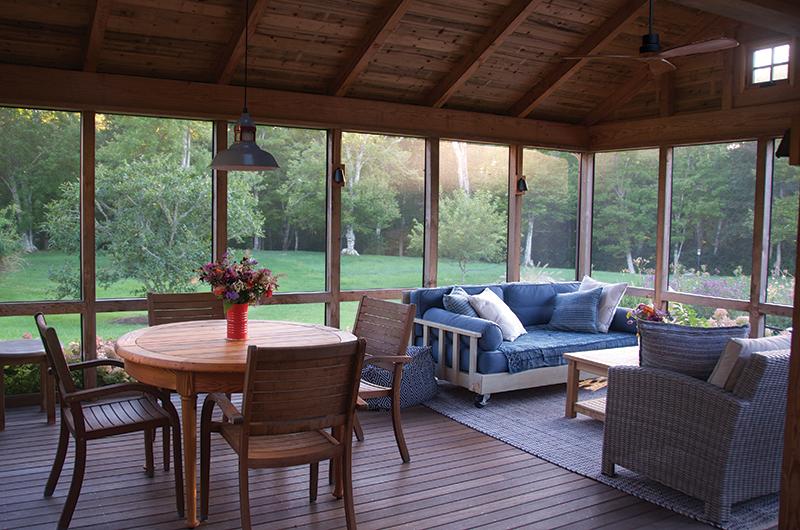
“It’s not a water view but it’s pretty spectacular,” Graham raved.
Given that Graham’s house is nestled in the woods, many kinds of wildlife have been known to stop by. They’ve informed some of Graham’s decisions about the outdoor aesthetic. Deer are among the most common visitors, hence her choice of St. John’s Wort, lavender, and lady’s mantle varieties, all of which are unappetizing to the cervid palate. An old, dead tree has been left standing in the corner of the yard, as it hosts an almost daily spectacle of nature: an osprey feasting on freshly caught fish atop the structure.
“I think it’s a male osprey,” Graham speculated. “He eats about half the fish, then probably takes it back to the nest for the young’uns. He sits there by himself and it’s fabulous to watch.”
Graham was also careful to conceive of a garden that would draw in butterflies. Her efforts seemed to pay off, as she reported seeing a hundred of them congregating at once on an August day. Butterfly weed, which punctuates the gardens in orange bursts, is responsible for these mass monarch sightings.
“It’s like a form of milkweed,” Graham said. “At least five times a year I’ll find the caterpillar making the cocoon. You can take him inside and watch him hatch.”
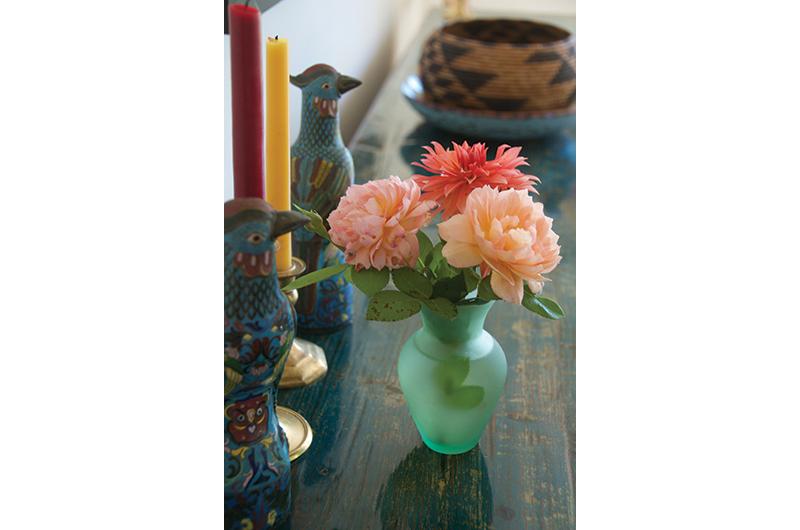
In addition to the flower gardens surrounding the house and those blooms she brings inside to adorn her space, Graham maintains cutting gardens designated for vegetables and berries. Both garden spaces are fenced with hearty locust trunks that support the netting. Produce such as kale, shelling peas, salad greens, blueberries, raspberries, and strawberries fuel her cooking passion, as well as provide entertainment when her grandchildren visit. In another corner of the yard, a teepee-shaped trellis supports clematis vines (the most fickle plant on the planet, Graham will tell you, insisting that a degree in growing clematis is necessary to tame it). There is also a place for the likes of rogue anemones that dominated an entire bed of flowers, as well as any other unruly plants, to linger in exile.
“I have a flower graveyard,” Graham admitted with a smile. “Where I keep anything I don’t like.”
With such a wide breadth of plants and projects on the premises, Graham estimated that she spends an average of two hours per day gardening. DiBiaso’s team comes every month to assist with upkeep, for which Graham expresses tremendous gratitude.
“If I worked in this garden four hours a day, every day, I would never get ahead. I would always just be deadheading and weeding. I’d still be way behind,” Graham observed. “Without Lila’s help, I’d be struggling.”
Despite the hefty labor involved, Graham has developed a strong predilection for the constant activity. According to her, much of this enjoyment stems from a love for order and getting to plan out the colors. Another factor is the forgiving nature of the hobby.
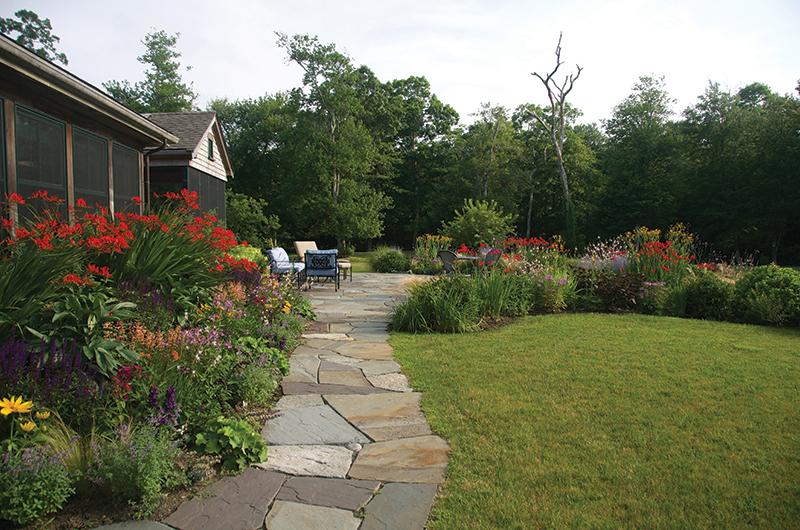
“If you build a house and the house doesn’t work, you can’t just tear it down. With a garden you can keep trying different things,” she said. “It’s like being a kid playing in the dirt. You get to make these fun decisions about color. ‘I’m gonna put yellow over here.’ Then you’re like, ‘Oh it’s horrible here, let’s take that out!’ You just dig them out! It’s so satisfying to have this garden.”
The key to Graham’s sustained passion is that she only gardens while on the Vineyard. Every evening when it’s not raining, she sits on the patio, an activity she refers to as “meditating.” The flower beds “recharge [her] happy battery,” she says. The strain on joints or passage of time becomes less noticeable the more absorbed she is in deadheading, weeding, and planning. Perhaps the most important component, she speculates, is the “seductive Vineyard” environment in which she gardens.
“I wake up every day so happy I’m alive and in this place,” she said. “When I head up Middle Road, everything just changes. You’re no longer harried and trying to get where you’re going. It’s just like, ‘Ah, now I’m home.’”

